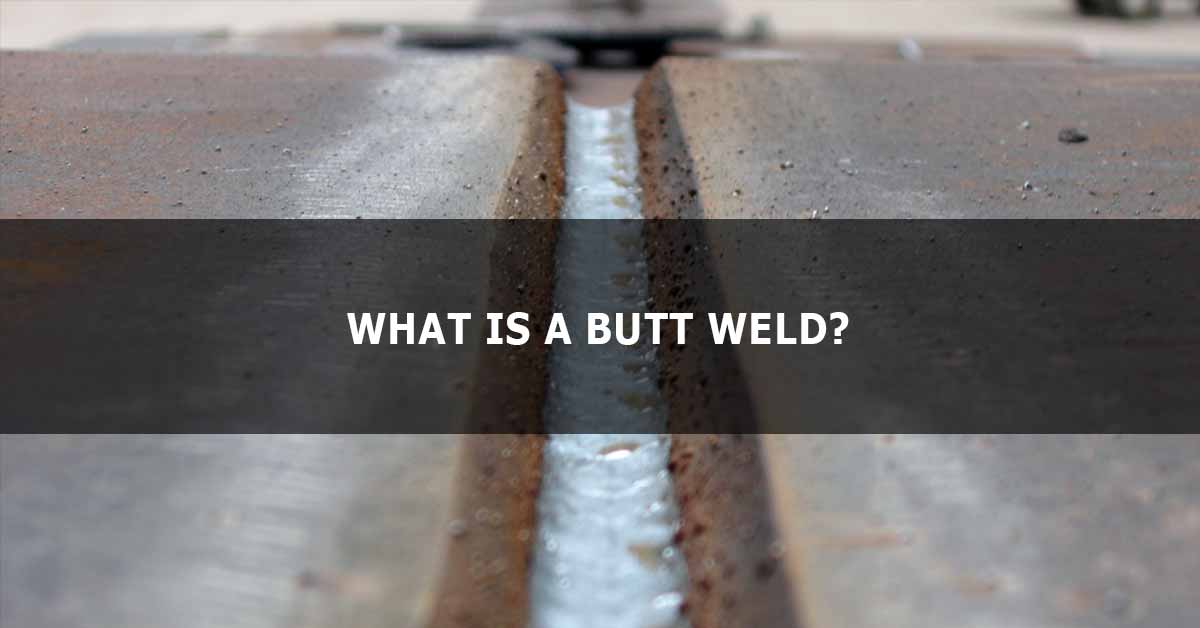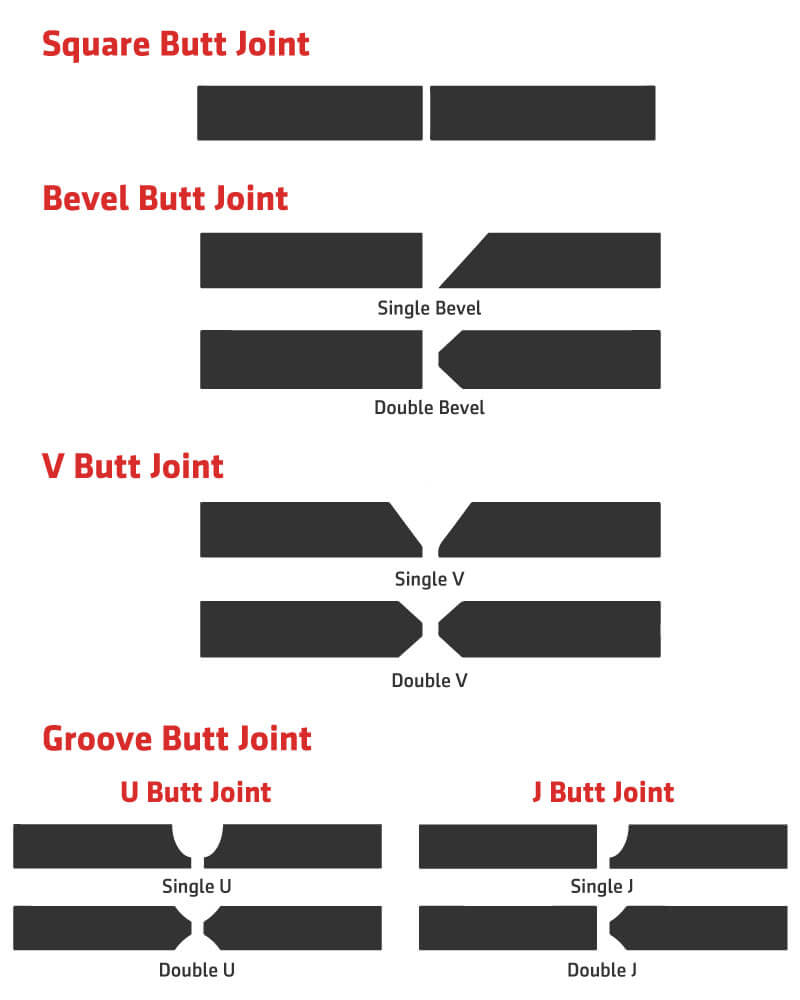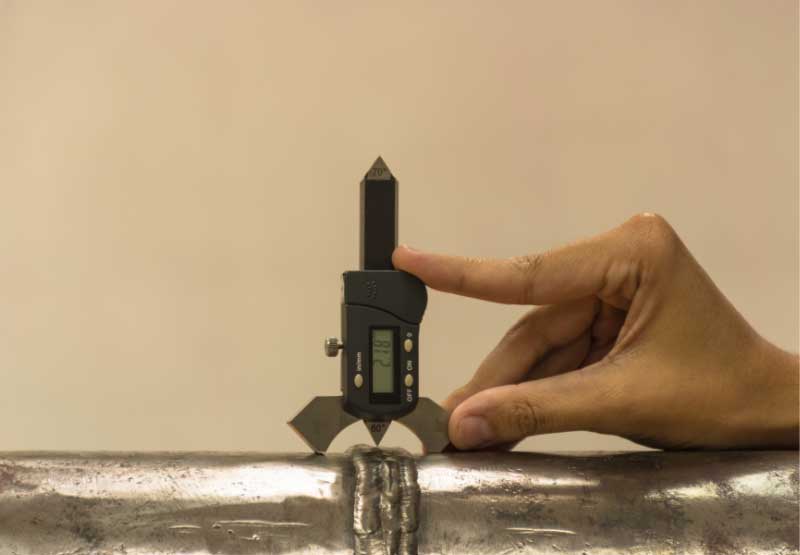If you are an aspiring welder who wants to learn the rules of the trade as perfectly as possible, you must know about butt welds. Welding joints is an essential aspect of a metal fabricator’s work. Butt welds are one of the five main types of joint welding (including corner, edge, tee, and lap) commonly used by welders. A butt weld is considered one of the most versatile and, simultaneously, the most straightforward type of joint welds a welder must master.
We think that we highlighted its importance enough and the rest we can do is tell you all about these types of welds. To understand how they work, keep reading on.
What are Butt Weld Joints?
A Butt Weld is when two pieces of metal are butted together, with the abutted ends thickened, shortened, and fused together. It is a circumferential type of weld where the melted metal is applied around the joint. It represents the most common joint welding type used in welding pipelines and fabrication.
The process involves putting two pieces of metal together end-to-end and joining them together along the joint. The two pieces of metal that are welded need to be in the same plane while the weld remains on the surface. It results in the two joined pieces of metal being fused parallel to each other without overlapping.
The Butt Weld is one of the two types of continuous welds that fabricators used today, fillet welds being the second. Heat penetration is critical to creating a perfect butt weld, especially when joining thin pieces together. But problems may occur when welders work on thicker pieces of metal. In that case, surface preparation is critical. It involves manufacturing wedge shapes between the material you plan to fuse. V, J, and U wedges are the most common wedge shape types.
The penetration level is determined by the thickness of the material being worked on. Welders also have to prioritize minimizing the volume of the required weld when creating a joint. Minimizing the volume of the weld also means minimizing the possibility of creating imperfections, thus making the weld stronger. The most common types of welding processes used when creating Butt Welds are TIG and MIG welding, which can be performed manually and automatically.
Advantages of Butt Welds
Butt welds are the most common way of welding a joint for a good reason. They have numerous advantages compared to other joint welding types. So while joint welding, you will need to consider the fact that these are:
- Much more economical compared to other types of welds.
- It can be done both manually and automatically.
- You do not need to invest so much time in preparation, which is relatively easy to master.
- Creates a structurally strong bond.
- Very easy to learn, even for beginner welders.
- Allows for easy application of post-weld activities, i.e., grinding.
- One can inspect quality purposes with ease.
Disadvantages of Butt Welds
Even though Butt Welds are the go-to method when creating joint welds, they still come with a few downsides. But these are far few when compared to other joint joining methods.
- Prone to porosity and create excess cavities.
- Cracking and slag entrapment happens quite often
- Bevel geometry can limit its application.
- Sensitive to some types of surface conditions.
Related Article: Welding Symbols | Guide To Reading Weld Symbols
Types of Butt Joint Welds
There are various Butt Weld types that fabricators use, and each comes with its own characteristics. They are usually named after the shape of the wedge they created by the surface penetration. The most common ones are Square, Bevel, V Butt Weld, and Groove.
Square Butt Weld
Using a square Butt Weld is usually done on projects that are 3/16 inches thick or less. Although a square Butt Weld is very strong, it should not be used on something that will be subject to heavy loads or constant impact for a long time.
Preparing it is easy as one only needs to join two edges of the metal pieces together. But one also has to be very careful and connect the metal pieces throughout the entire length as accurately as possible. A welder must also leave a wide enough root opening for the filler metal to penetrate deep enough.
Bevel Butt Weld
A Bevel is used when a fabricator needs to make a deep penetration for a groove weld. A bevel refers to the slanted edge of a structure. By beveling the edges, you thin down the metal you are working on but still maintain a strong joint.
However, the strength of the joint can only be created by applying a proper depth and angle of the bevel. The angle should be set at around 45 degrees but needs to be wide enough for the fabricator to easily place the first bead. You cannot work at a 90-degree angle at all. A welder must also ensure they go deep enough to achieve full penetration. However, one has to be careful not to go too deep and risk blow through.
V Butt Weld
A ‘V’ Butt Weld is commonly seen on frames that range from 1/4 to 3/4 inches in thickness. Also, the bevel angle when working on these types of joints should be between 60 degrees when working on plates and 75 degrees for pipes. Unfortunately, a V-shaped weld is both harder to prepare and costs more. It also requires more filler material as opposed to, for example, a square weld.
However, the strength of a ‘V’ Butt Weld is much greater than the square weld but is not recommended if you are working on something bent at the very root of the weld.
Groove Butt Weld
Groove welds are mainly used for working on materials that are 3/16 inches thick. Grooving the metal plate will give the joint the needed strength. Thicker metals have more space where one can deposit the filler material. So, grooving it will create a much stronger bond.
When grooving, fabricators must adjust the angle for the electrodes to pour into the joint sufficiently. If you make a groove that is too narrow, you risk not allowing the filler to penetrate deep enough. It may even crack after a certain period of time.
The Groove Butt Weld joint can be single-grooved or double-grooved. This part will considerably depend on the thickness of the metal one works on and the type of welds needed. When it comes to thicker metals, they can be grooved on both sides. In contrast, thinner materials can be grooved only on a single side.
Depending on the groove weld penetration, they can be Complete Joint Penetration (CJP) or Partial Joint Penetration (PJP).
Types of Butt Welding Processes
Even though MIG and TIG welding is the preferred methods for Butt welding, some alternatives work more than well. Flash Welding and Resistance Welding are very suitable for creating good Butt Welds.
Flash Welding
Flash welding is a welding process that is considered a branch of resistance welding. It requires no filler material whatsoever. With flash welding, the two materials joined together will be set apart at a distance determined prior to the start of the joining process. Preparation will significantly depend on the material thickness, desired outcome, and material composition.
Once everything is set, a current will create resistance between two materials. The resistance helps generate an arc, which melts the two metals and thus joins them together. Once the desired temperature has been reached, the operator will press the two pieces together, consolidating the weld.
Resistance Welding
Resistance welding also involves setting the two pieces that are meant to be joined at a predetermined distance. The weld tips are supposed to clamp the given weld pieces in place. The current will then pass through the tips, forcing them to join together.
Heat is generated due to high resistance, which causes the workpieces to melt and create a weld nugget. The tips come with a built-in cooling mechanism which will help in preventing too much heat from being generated on the very surface. It also keeps the heat localized.
Final Verdict
Creating a perfect Butt Weld is essential to becoming an all-around welder. It is also one of the primary methods of joint welding, and many fabrications will likely need to create a Butt Weld sometimes in their lives.
Therefore, one cannot start a career without learning something about them. Luckily, this is not a challenging task at all, and even novices can pick it up quickly.
References:







